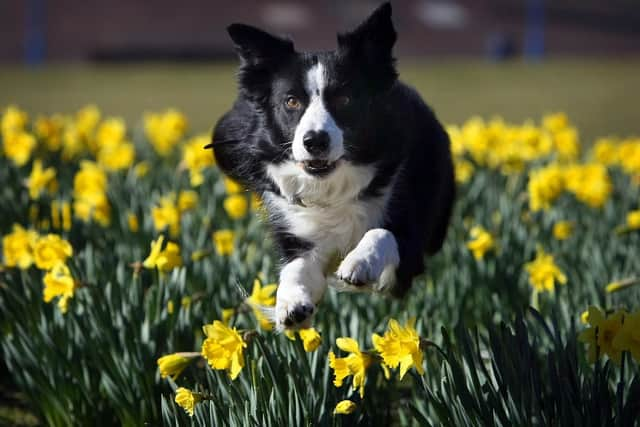Common spring flowers that are toxic to dogs and what to do if your dog eats a poisonous flower
With spring approaching and the weather warming up, more people will be going on longer walks with their dogs.
The population of dogs in the UK was estimated at 12.5 million in 2020 to 2021. With so many dogs running in British hillsides and gardens, it’s important to keep them from eating spring flowers and their bulbs, some of which could be poisonous to dogs.
Advertisement
Hide AdAdvertisement
Hide AdDog trainer, Joe Nutkins, and Canine Cottages share their five poisonous spring flowers that could be dangerous to your pooch.


Below is a list of spring flowers that are toxic to dogs.
Tulips
These vibrant flowers are regularly found in many homes but are proven to be extremely poisonous to pets.
It is crucial to not let your dog near this flower, especially the bulb, which is the most poisonous part.
Symptoms include vomiting, drooling and diarrhoea; even drinking the flowerpot water can prove poisonous to dogs.
Daffodils
Advertisement
Hide AdAdvertisement
Hide AdSimilar to tulips, daffodils can prove dangerous, as they can cause vomiting, salivating and cardiac arrhythmia among the worst symptoms.
If you have a dog, it would be wise to keep these plants in a secure location where the dog cannot reach them.
Snowdrops
These small flowers can cause quite a bit of damage to your dog if consumed. It’s the bulb of this plant that is the real danger, so if you have a pooch that loves digging, it would be safe to remove them from your garden.
While the bulb is the worst, the rest of the plant can cause your dog to become very ill too, with symptoms like vomiting and diarrhoea occurring within a short time.
Bluebells
Advertisement
Hide AdAdvertisement
Hide AdThe common bluebell can be found across Britain’s woodland and is among the plants that are poisonous to dogs.
This plant grows close to the ground and is easy for dogs to bite into. Symptoms of consuming this plant are very similar to the above plants, so be sure to note the flowers you see in case you need to reiterate what your pooch has eaten to your vet.
Crocus
This flower is the symbol of the beginning of spring but it is also very poisonous to your dog; in the worst case scenario, this flower can cause organ failure if ingested, as well as symptoms such as vomiting, bloody diarrhoea and salivating.
Call your vet immediately if you see your dog eating one of these flowers.
What to you if your dog eats a poisonous flower
Advertisement
Hide AdAdvertisement
Hide AdIf your dog ingests any of these plants, Joe Nutkins explains what to do: “Typically, dogs would avoid eating a plant that they instinctively know is poisonous to them, more so when most of the plant, or all of it, will be dangerous.
“If your dog does manage to eat a plant or flower that is known to be toxic to dogs, call your vets while getting ready to take your dog directly to them. Calling your vet while you are on your way, or asking someone else to call them for you, means they can get everything ready for your arrival and help your dog sooner. If you are not near your own vet, look up a local vet if you haven’t already located one in advance and let them know you’re on your way.
“If your dog eats a plant you suspect is poisonous or toxic, you can contact the Veterinary Poisons Information Service on 01202 509000 - have info to hand that includes what plant your dog has eaten or a description of what it looks like - including the colour and any leaves, flowers or berries - as well as the size of your dog, and how much has been eaten. The hotline isn’t free but will be able to give you advice on whether your dog needs the vets urgently or not.”
Digital PR manager at Canine Cottages, Shannon Keary, said: “It’s important to be aware of the flowers and bulbs which could prove to be poisonous or toxic to dogs in order to keep them safe in the garden, or on walks, especially now that spring is upon us. We hope this advice comes in handy for dog owners as we approach the sunnier months.”
Comment Guidelines
National World encourages reader discussion on our stories. User feedback, insights and back-and-forth exchanges add a rich layer of context to reporting. Please review our Community Guidelines before commenting.